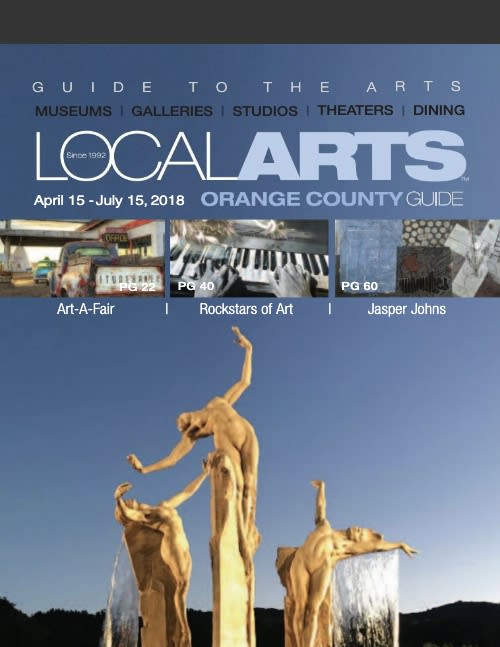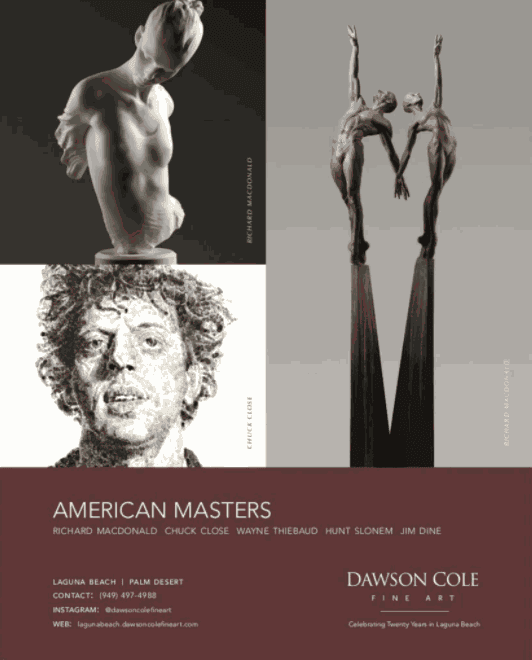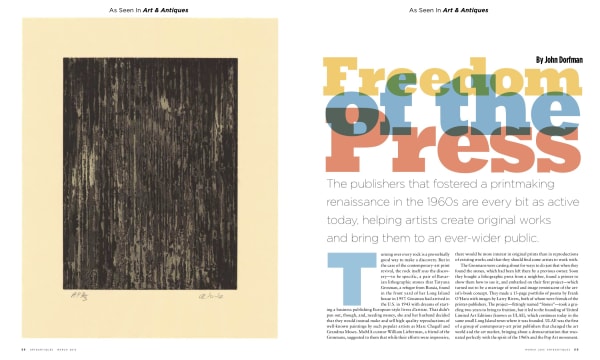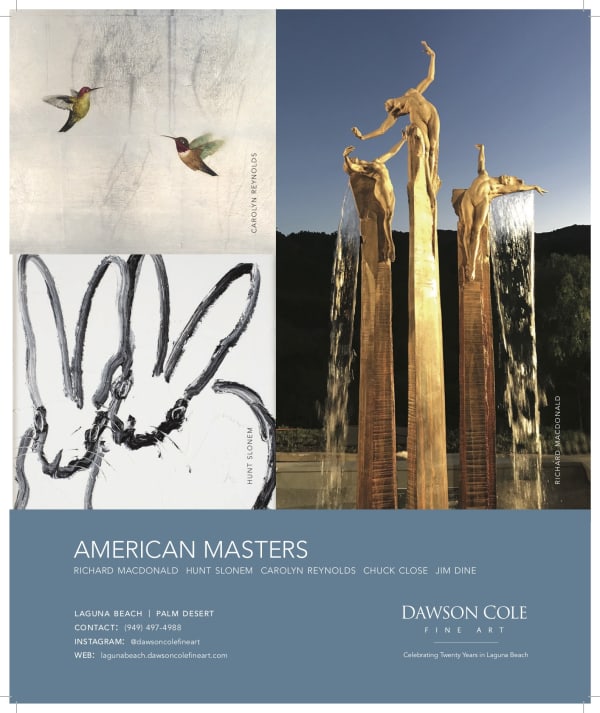Chuck Close American, 1940-2021
-
 Chuck ClosePhil II, 2002Lithograph Relief Print with Embossing26.5 x 20"Sold
Chuck ClosePhil II, 2002Lithograph Relief Print with Embossing26.5 x 20"Sold -
 Chuck ClosePhil, Fingerprint, 2009Screenprint in 25 colors56 x 44"
Chuck ClosePhil, Fingerprint, 2009Screenprint in 25 colors56 x 44" -
 Chuck CloseSelf Portrait, White on Black, 1997Spitbite Etching20.5 x 15.75"Sold
Chuck CloseSelf Portrait, White on Black, 1997Spitbite Etching20.5 x 15.75"Sold -
 Chuck CloseSelf-Portrait Screenprint, 2012Silkscreen in 246 colors59.5 x 50"
Chuck CloseSelf-Portrait Screenprint, 2012Silkscreen in 246 colors59.5 x 50" -
 Chuck CloseKeith II, 1981Handmade paper37.5 x 30"Sold
Chuck CloseKeith II, 1981Handmade paper37.5 x 30"Sold
Chuck Close’s prominence and popularity are due mostly to his photographs and the giant portraits he has painted since the 1960s. Based on photographs, the portraits are monumental close-ups of heads (his family and friends) produced under various limitations (some self-imposed creative techniques, some health-related).
In a 1997 interview, Close told New York Times reporter, Michael Kimmelman, “My (early) learning disabilities also affected what I did as an artist. I could never remember faces, and I’m sure I was driven toward portraits because of the need to scan, study and commit to memory the faces of people who matter to me. The other thing is that I’ve always been incredibly indecisive and overwhelmed by problems, and I’ve learned that breaking them down helps, which is exactly how I paint a portrait: I break it down into bite-size pieces, into lots of little manageable decisions... What moves me about Seurat’s art is the incremental, nuanced, part-to-whole way his paintings are built out of elegant little dots, though I feel even more of a kinship with Roman mosaics because the mosaics are made out of big, clunky chunks, and I especially like the idea that something can be made out of something else so different and unlikely. In Roman mosaics, an eyeball is made from the exact same chunk of stone as the background, and this brings up the concept of all-overness and Jackson Pollock. It’s what I aim for in my own work, an all-overness that’s different from what most portraitists do by putting all of their attention into the eyes, nose and mouth.” (“At the Met with Chuck Close,” The New York Times, July 25, 1997, p. B22.)
Chuck Close is best known for his large-scale Photorealist portraits, composed of tiny airbrush bursts, thumbprints, or looping, multicolored brushstrokes. In 1962, Close received his BA from the University of Washington in Seattle, followed by his MFA at Yale University in 1964. Three years later, he moved to New York, where he was one of the founders of Photorealistic painting, working at first in black and white before shifting to colorful, bright, and almost abstract paintings.
Close systematically composes his paintings with a grid format, which is often visible in the finished work; his most recent works combine his methodical grid with the spontaneous brushwork of the Abstract Expressionists. The subjects of his portraits are usually his family and friends, including artists such as Richard Serra, Cindy Sherman, Alex Katz, Roy Lichtenstein, and Robert Rauschenberg. His work is widely esteemed, and has been exhibited at The Museum of Modern Art and PS1 in New York, the Centre Pompidou in Paris, and the Tate Modern in London, among many other institutions.
In 1988, Close was diagnosed with a rare spinal artery collapse, which he referred to as “The Event,” and was forced to paint in a wheelchair. Eventually, however, his artwork evolved to accommodate those new circumstances, and he began to incorporate pixelated squares of color, the result of which were painted with a brush strapped to his wrist. From afar, , and which, from far away, create the effect of a unified composition.
Chuck Close died in August of 2021.
-

Blooms and Brushstrokes
A Group Exhibition 11 Jul - 22 Sep 2024 Laguna Beach'Blooms and Brushstrokes' on view from July 11, 2024 through September 22, 2024. 326 Glenneyre Street Laguna Beach, CA (949) 497-4988 RSVP: info@dawsoncolefineart.comRead more -

A Quest for Identity
1 - 31 Jan 2020 Laguna Beach, Palm DesertIf portraits served the purpose of simply recording physical appearance, then painting would have been made redundant with the earliest developments of photography. Instead, the opposite is true: in the...Read more -

Chuck Close
Face to Face 1 - 31 Aug 2019 Laguna Beach, Palm DesertFor more than five decades, Close has captured his friends and family in portraits that are as abstract as they are realistic, executed in a diverse range of media and...Read more -

Pablo Picasso: Themes & Variations
6 - 27 Oct 2017 Laguna BeachPicasso devoted an extraordinary amount of time and energy to his pursuit of printmaking, from his earliest etchings created in 1904 at the age of 23, to his final suite...Read more
-

Curated Coastal
Issue 4 March 22, 2022 Read more -

El Paseo
Palm Desert 2022 January 1, 2022 Read more -

Dawson Cole Fine Art Highlighted: The Best of California 2021
224 Reasons to Love the Golden State: Dawson Cole Fine Art, Laguna Beach May 19, 2021 Read more -

Local Arts
Spring October 22, 2020 Read more -

Pelican Hill Magazine
Winter 2019 Edition September 22, 2020 Read more -

Pelican Hill Magazine
September 22, 2020 Read more -

Styled Life Magazine
Winter 2020 September 9, 2020 Read more -

Montage Winter Cover
August 18, 2020 Read more -

As Seen in "Art & Antiques": Freedom of the Press
July 27, 2020 Read more -

Dawson Cole Fine Arts Presents: Modern Masters
July 24, 2020 Read more -

American Masters
May 5, 2020 Read more -

California Homes Magazine August 2019
Shopping for Art in Laguna Beach August 1, 2019Celebrating its 22nd year, Dawson Cole Fine Art was recently featured in California Homes Magazine's August 2019 issue as one of the 'go to' places...Read more -

Dawson Cole Fine Arts: 22nd Anniversary Editorial
March 20, 2017 Read more
























